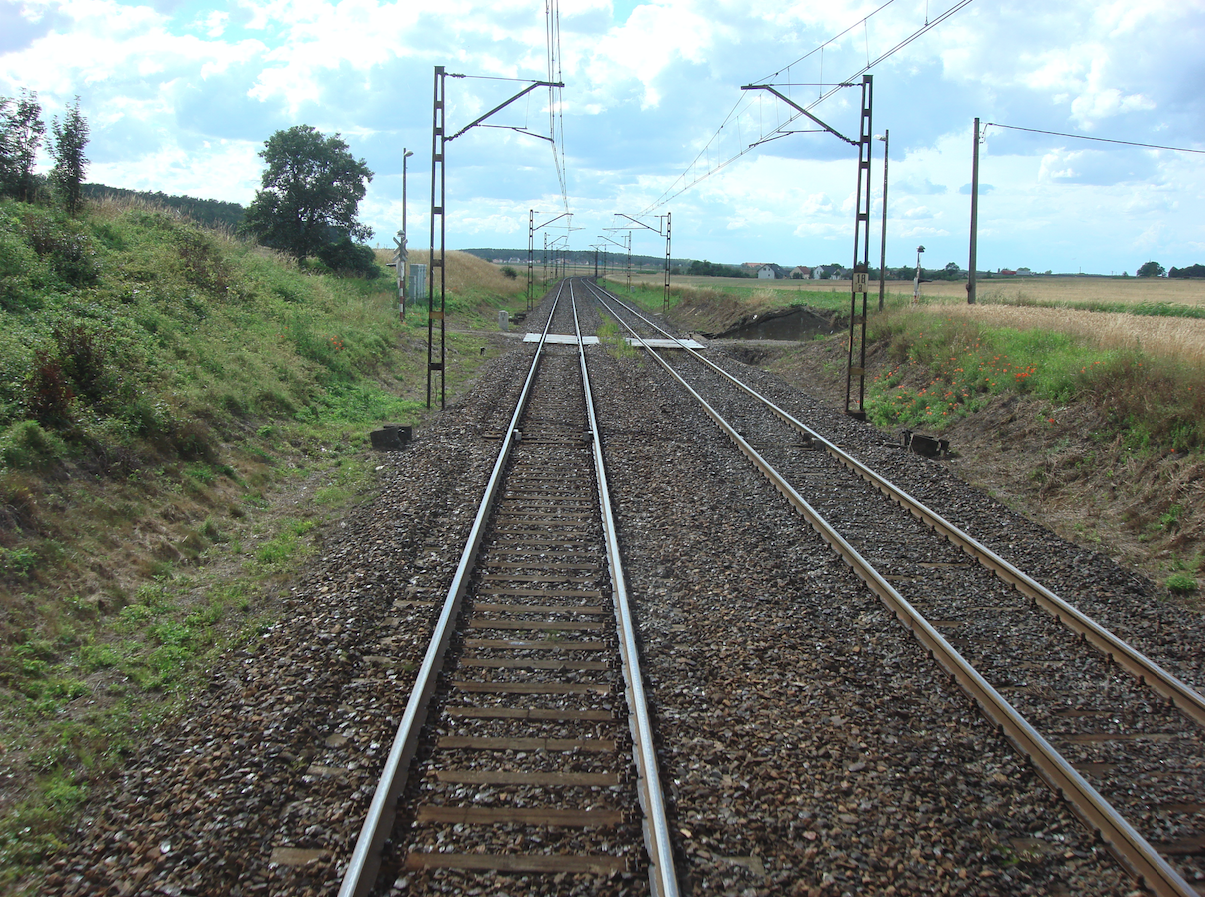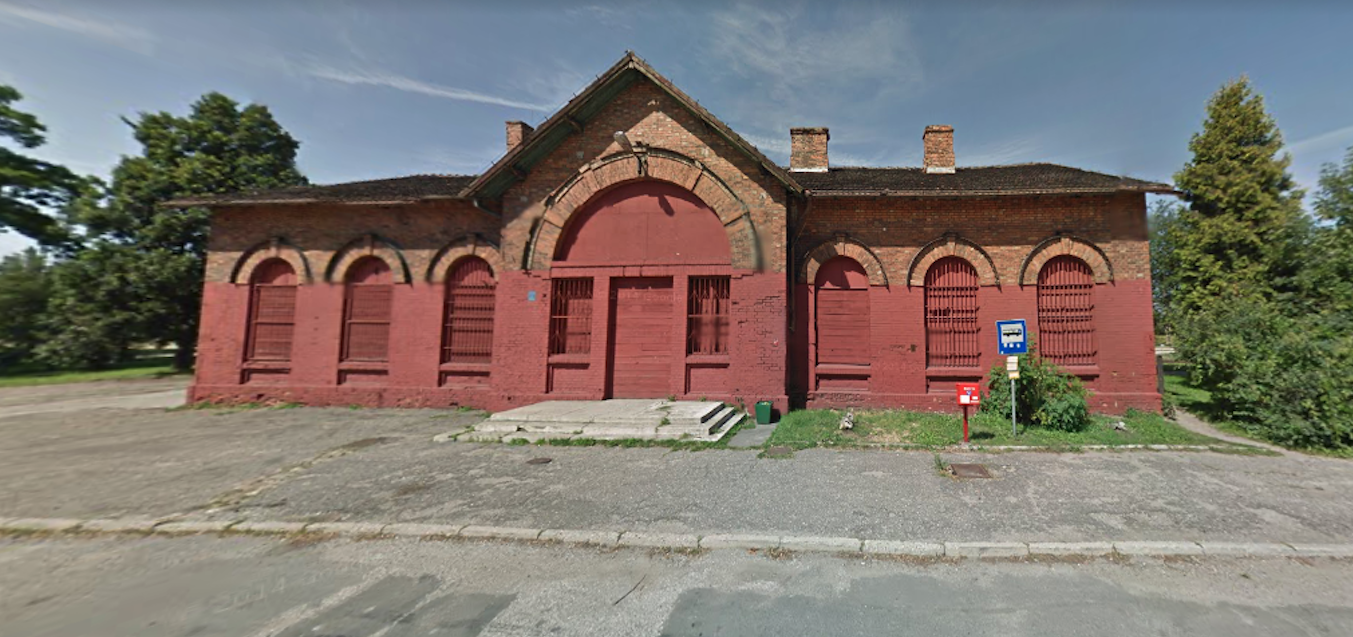Łask 2021-02-22
Railway in Łask.

An important railway route Warsaw - Kalisz runs through the town of Łask. The construction of this railway line began when Poland was under partitions. The Waszawsko-Kaliska Railway was built by the Warsaw-Vienna Iron Road Joint Stock Society in the years 1900–1902. The trail was opened on November 15, 1902 as broad-gauge (1,524 mm). In 1906, the invaders of Poland (Russians and Germans) reached an agreement and connected the Russian and imperial railway system with the Kalisz - Nowe Skalmierzyce cross-border section. The section was 7 km long, and the width was standard gauge, as in the German Empire.
In 1912, the Warsaw-Kaliska Railway was nationalized by the tsarist government. After the outbreak of the Great World War, the Germans transformed the Kalisz - Warsaw route into a standard gauge (1435 mm) route. From 1916, the trail was rebuilt into a double track.
In 1918, the route Warsaw - Kalisz - Ostrów Wielkopolski was taken over by the then militarized Polish State Railways. The route was rebuilt after the war was destroyed and then modernized. The line was electrified in 1952–1975. Currently, the route Warsaw - Ostrów Wielkopolski consists of the following lines: railway line No. 3: section Warszawa Centralna - Łowicz, railway line No. 15: section Łowicz - Łódź Kaliska, railway line No. 14: section Łódź Kaliska - Ostrów Wielkopolski.
The Warsaw - Ostrów Wielkopolski route connects the following cities: Warsaw Kaliska - Błonie - Sochaczew - Łowicz Kaliski - Głowno - Stryków - Zgierz - Łódź Kaliska - Pabianice - Łask - Zduńska Wola - Sieradz - Błaszki - Opatówek - Kalisz - Ostrów Wielkopolski.
The Łask railway station was launched in 1903, and finishing works lasted until 1903. The Łask station has two tracks and four side tracks. There are two platforms at the station. The historic station building still exists today. The building is single-storeyed with a gable roof. Made of red brick with arched sills above the windows and main entrances. The roof is tiled. Inside there was a ticket office, a buffet and a waiting room. The passenger station building was closed in 1997, when tickets could already be purchased from the conductor or from ticket machines. In 2018, the exterior of the building was painted. In 2019, it was secured against third party access. Since 2017, the manager of the railway station in Łask is looking for a new role for him. PKP SA presented the rental offer of the entire Łask railway station on the pages of its website. This, however, may prove difficult, as the train station is far away from the city center.

In 2018, PKP Łask served 200-300 passengers a day. Address: Kolejowa, 98-100 Łask.
The Łask railway station also had a railway connection with Zelów, about 16 km long. In fact, it was a railway siding connecting Łask with Zelów, or rather with Herbertów, located on the outskirts of this city. The siding was established in 1959. The main task of this line was to support large textile plants "Fener" in Zelów and the military unit in Teodory, i.e. the airport. The line was also used by several smaller enterprises from Łask, including furniture factories. After the fall of the textile factories in Zelów (1994), the siding decreased significantly. The 7 km section from Teodorowo to Zelów was excluded from operation. In 2012, the siding was used to build a section of the S8 motorway (DK 12). Then a new track was laid, with a different route, for the 32nd BLoT. The siding goes south under the S8 motorway (DK 12), and not turned west as before. In a straight line, about 1 km, the siding reaches the MPS depot. The railway siding from the vicinity of the motorway to Zelów was dismantled in 2015-2017.
Currently, in 2021, the only point still served by the siding is the 32nd Tactical Air Base. On a monthly basis, however, the turnover on this siding does not exceed a dozen or so wagons. These are mainly wagons with propellants. The active railway siding ends at the MPS depot.
Written by Karol Placha Hetman
